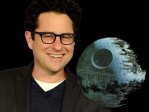For the record, there are only three “Star Wars” movies.
Oh, I know what you’re thinking. “What’s the matter with you, you scruffy-looking nerf herder? There are obviously six ‘Star Wars’ movies – the original trilogy and Episodes 1, 2, and 3!” Well, in your universe, that may be true, but in mine the “Star Wars” saga began with two droids in an escape pod and ended with a big Ewok hoedown.
This isn’t the first time I’ve chosen to use selective memory when it comes to non-existent movie sequels. For instance, I still insist no sequels were ever made for “The Matrix.” Just consider me the International Cycling Union or the NCAA of movie fans. I may remember certain events happening, but I decide later on down the road to never acknowledge they actually took place. Remove your banners from the rafters, please.
sequels were ever made for “The Matrix.” Just consider me the International Cycling Union or the NCAA of movie fans. I may remember certain events happening, but I decide later on down the road to never acknowledge they actually took place. Remove your banners from the rafters, please.
Of course, you can imagine my confusion when, upon learning Disney had purchased Lucasfilm for 80 gazillion dollars, I began to hear reports of “Star Wars” episodes 7, 8, and 9 being made sometime in the future. “Hmm, I guess they’re just going to skip 1, 2, and 3,” I thought to myself. “Interesting strategy. Who am I to question the collective wisdom of Walt Disney and George Lucas, though?”
Putting all silliness aside, I still have a hard time describing my sheer and utter disappointment with “The Phantom Menace,” “Attack of the Clones,” and “Revenge of the Sith.” I’ve even tried several times over the years to convince myself I’m wrong. “Well, the effects were really good…” “Ewan McGregor was a really good Obi-Wan…” “Darth Maul was pretty cool…” “Um… Natalie Portman looked nice…”
I just reached a point where I couldn’t do it anymore. I had such a hollow feeling after seeing Episode 1 in the theater (Well, not as hollow as this guy, but still…) I actually wrote a column in the newspaper I was working for about it. In fairness to George Lucas, I’m sure after years of buildup and anticipation there was no way anything he did would have matched my expectations, but, my gosh, nothing could have prepared me for the train wreck known as “The Phantom Menace.”
That was just the glancing blow, though. “Attack of the Clones” somehow managed to pull off the nearly impossible task of actually being worse than the first movie. I still honestly believe the reason so many people enjoyed “Revenge of the Sith” so much is because of the pit of despair “Clones” had drug them into three years earlier. It’s like when Bruce Wayne finally climbed out of that pit/jail in “The Dark Knight Rises” – after you’ve been stuck in a hole like that, going back to Bane-infested Gotham City doesn’t seem all that bad.
I could go on and on about how poor the acting was, how badly written the dialog was, how weak the plots were, how when you’re making a movie about the past you shouldn’t MAKE EVERYTHING LOOK SHINIER, NEWER, AND MORE TECHNOLOGICALLY ADVANCED THAN IN THE FUTURE… Sorry, I guess was going on and on there, wasn’t I? But that’s how strong my utter disdain for these films runs, and I guess it’s why I didn’t exactly do back-flips this week when I learned of the Disney acquisition.
I’ve recently been reading the books “The Making of Star Wars” and “The Making of Star Wars: The Empire Strikes Back,” by J. W. Rinzler,  an author and editor for Lucas Licensing’s book division. In these lengthy, detailed, fascinating books, Rinzler details basically every step of how these two landmark films were made, warts and all. What has struck me about both films was the feeling of desperation in which both of them were made. The original “Star Wars” film was a huge gamble for everyone involved, from 20th Century Fox on down to a young filmmaker by the name of George Lucas. The financial success of the first movie was no guarantee that “Empire” would be a success either, as those were the days when sequels generally did not outperform their predecessors. Nearly every other chapter of the two books explains how each production teetered on the verge of bankruptcy time and time again.
an author and editor for Lucas Licensing’s book division. In these lengthy, detailed, fascinating books, Rinzler details basically every step of how these two landmark films were made, warts and all. What has struck me about both films was the feeling of desperation in which both of them were made. The original “Star Wars” film was a huge gamble for everyone involved, from 20th Century Fox on down to a young filmmaker by the name of George Lucas. The financial success of the first movie was no guarantee that “Empire” would be a success either, as those were the days when sequels generally did not outperform their predecessors. Nearly every other chapter of the two books explains how each production teetered on the verge of bankruptcy time and time again.
Whether it was pride or naiveté or unflinching faith, however, Lucas and his merry band of creators pushed on through every obstacle. There was such a fire to prove that these stories were worth telling that nearly everyone involved risked their Hollywood futures to bring them to the big screen. That meant painstakingly long hours of crafting some of the most detailed models ever used in film; braving the elements to create the illusion of alien landscapes; and endless hours of editing sprawling plot lines. Of course, in the end, the gambles paid off.
That fire, to me, is noticeably missing from Episodes I, II, and III. By the time those movies were made, Lucas had a guaranteed, built-in fan base. Even if the movies were awful (Well…), they were virtually guaranteed financial success, which gave Lucas and everyone else involved free rein to take a more relaxed approach. I’m not saying massive effort wasn’t put into the new movies, but the fight for mere survival was not as prevalent, to be sure. Computer-generated landscapes created by keyboards and hard drives replaced hands-on craftsmanship. The actors were more well-known, as opposed to the cast of virtual unknowns in Episodes IV, V, and VI. Sometimes fear is a powerful motivator.
So now we are faced withe possibility of three more sequels, with each poised to shatter box office records before they are even made.  The coup of wooing “Star Trek” director J. J. Abrams over to
The coup of wooing “Star Trek” director J. J. Abrams over to the dark side the rival franchise created some extra buzz, but even that news didn’t excite me that much. With the exception of the one incredibly entertaining “Trek” film, Abrams (in my eyes, at least) has always flashed more promise than results, and even if he restores the galaxy far, far away to its former glory, so what? The product has become so saturated now with spin-offs it’s sometimes difficult for me to even remember why I loved those original films so much in the first place.
I hope Disney and Lucas and Abrams and everyone else will prove me wrong on this. I would love to see a worthy follow-up to the original trilogy. In the meantime, I can only quote a line I heard a space rogue say in a movie one time: “I’ve got a bad feeling about this…”
